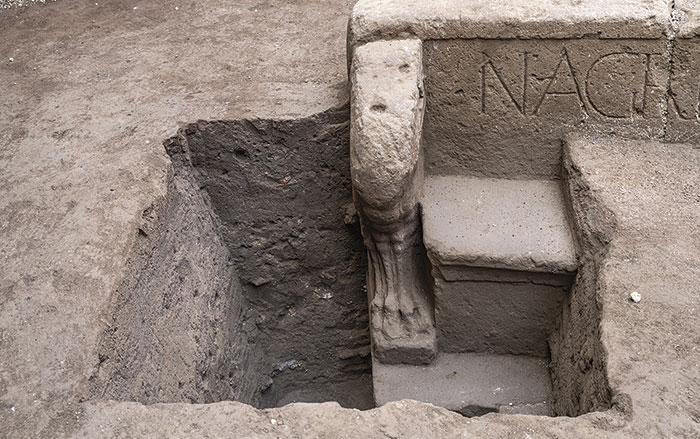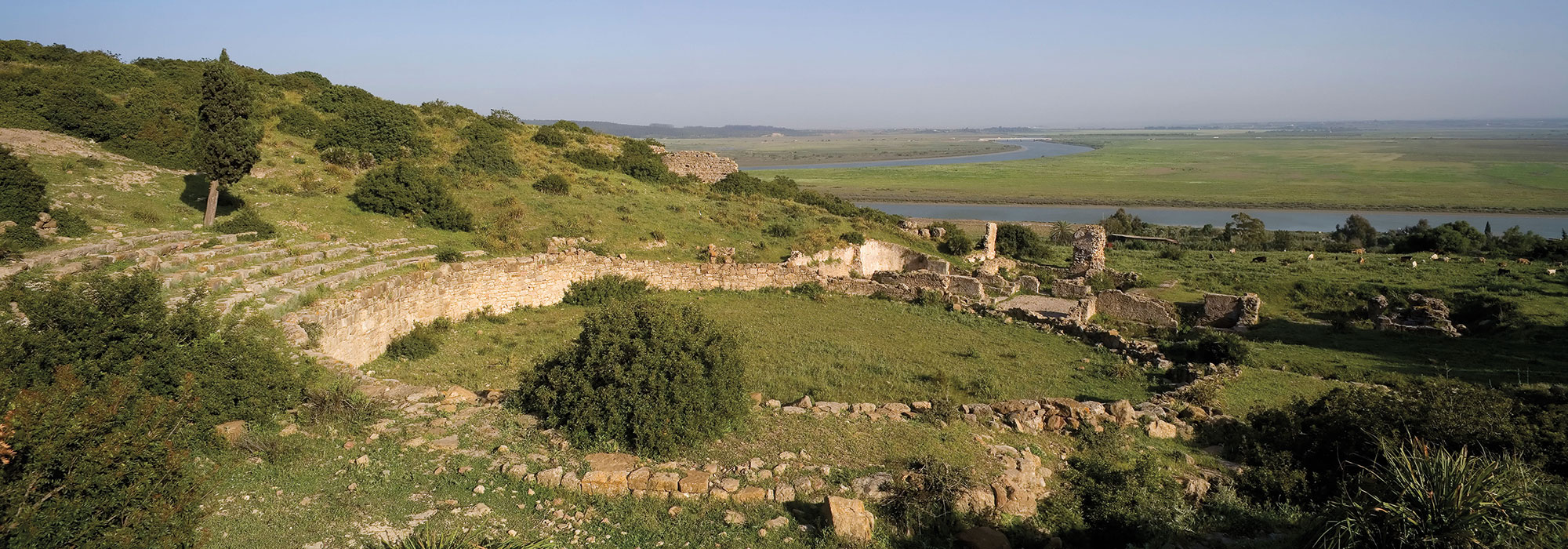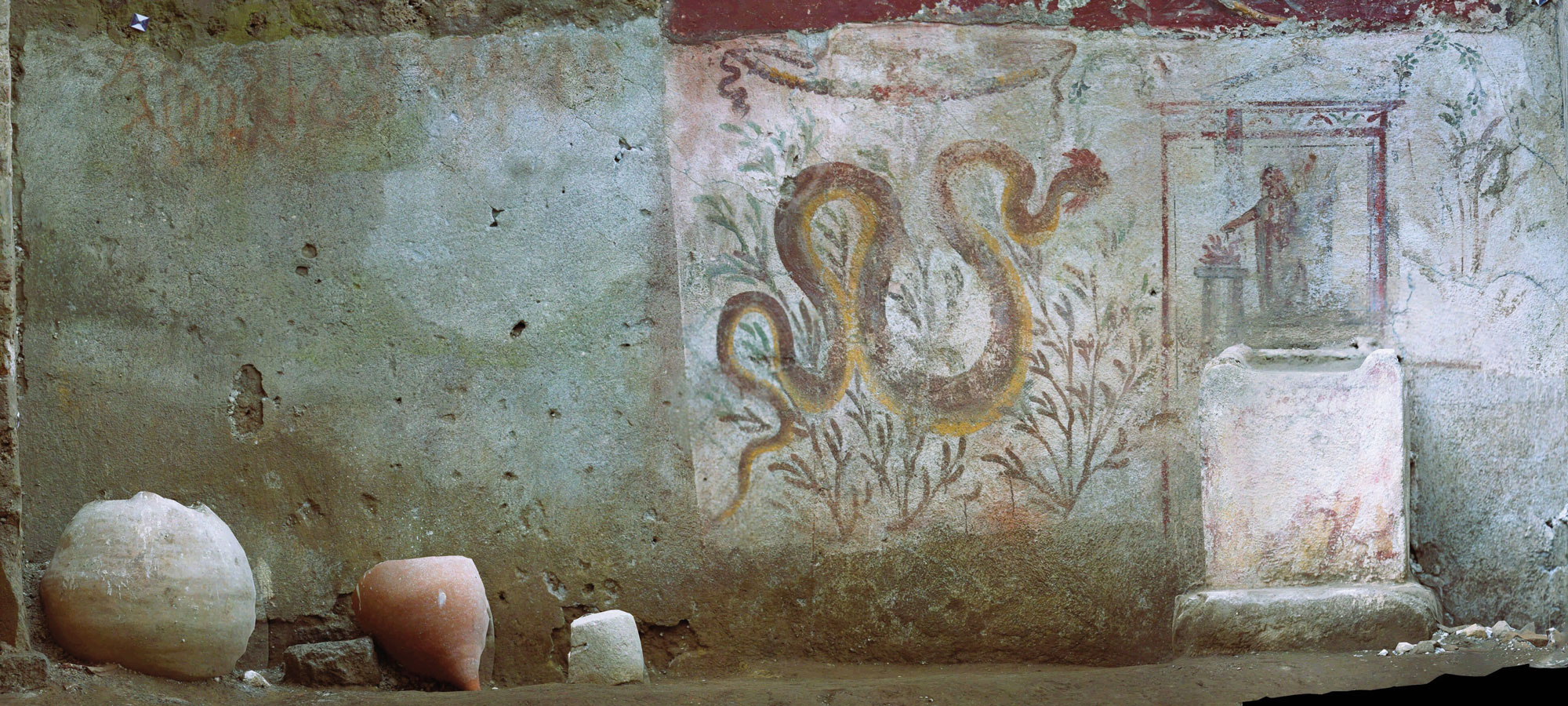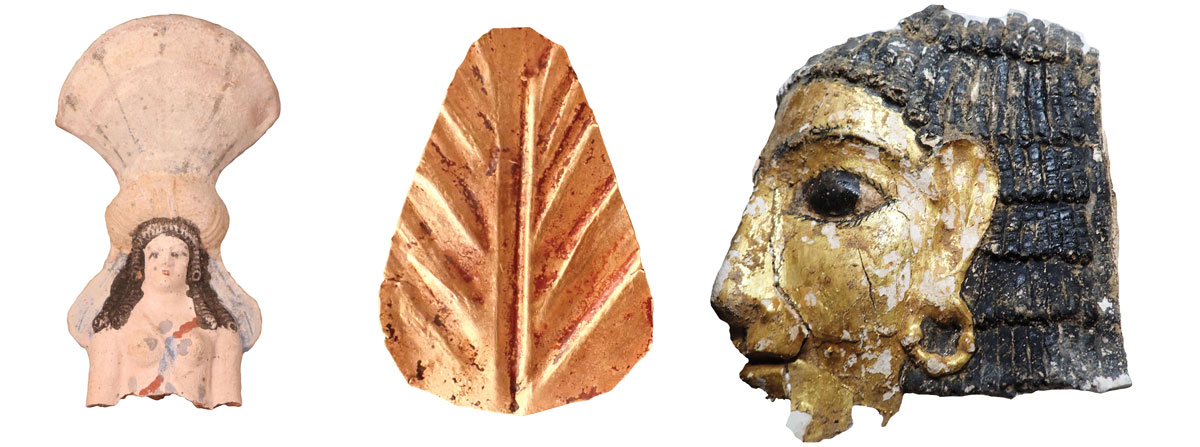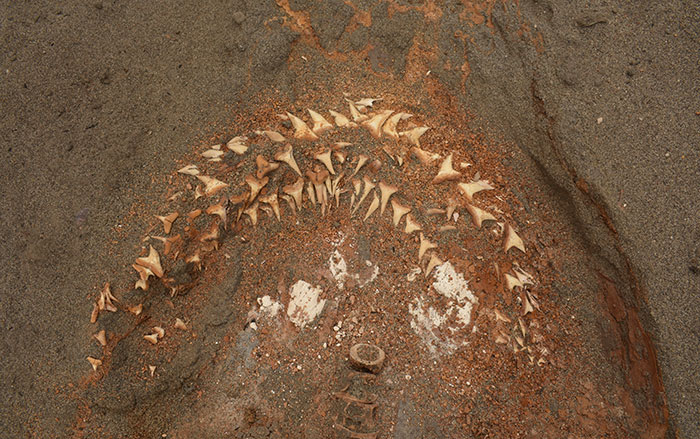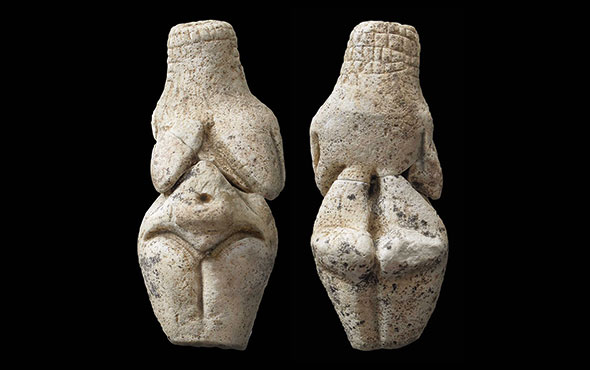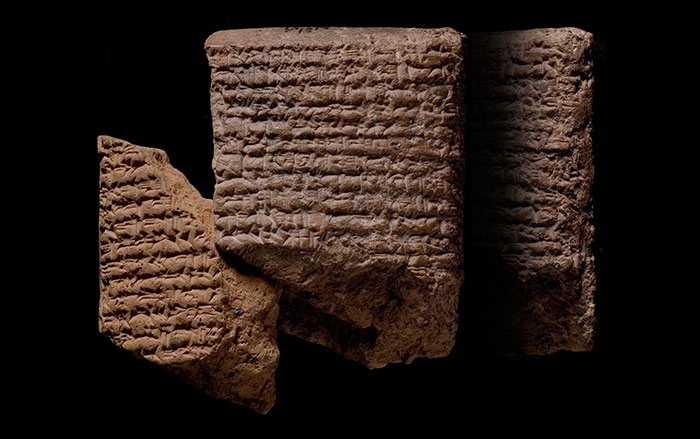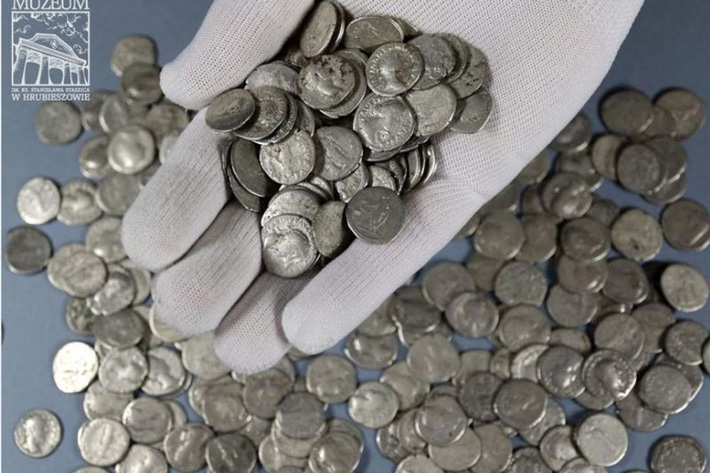
CICHOBÓRZ, POLAND—Science in Poland reports that more than 1,700 coins discovered in a field in southeastern Poland last year have been identified as 2,000-year-old Roman coins. Mariusz Dyl was looking for shed antlers when he spotted some scattered coins and alerted archaeologists at the Hrubieszów Museum. “We went to the place and together with a team of archaeologists and volunteers, including Mr. Dyl, we continued excavations around the discovery site,” said museum director Bartłomiej Bartecki. Examination of the coins indicates they were minted over a period of about 100 years from the end of the first century to the end of the second century A.D., since the oldest of the coins bears the image of the emperor Nerva, while the latest coin bears an image of Septimius Severus. Bartecki thinks the coins, which equal about six years’ worth of pay for a Roman legionary, had been placed in a wooden box or leather pouch decorated with silver-plated bronze rivets and buried by the Vandals, who were driven out of the region by the Goths between the end of the second century and beginning of the third century A.D. “Perhaps the Vandals hoped that they would return to their lands in the near future, so they decided to bury the coins. But they were wrong,” he said. To read about one of the largest Roman coin hoards ever found, go to "Seaton Down Hoard," one of ARCHAEOLOGY's Top 10 Discoveries of 2014.


